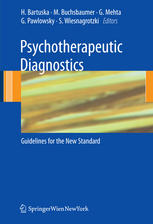

Most ebook files are in PDF format, so you can easily read them using various software such as Foxit Reader or directly on the Google Chrome browser.
Some ebook files are released by publishers in other formats such as .awz, .mobi, .epub, .fb2, etc. You may need to install specific software to read these formats on mobile/PC, such as Calibre.
Please read the tutorial at this link: https://ebookbell.com/faq
We offer FREE conversion to the popular formats you request; however, this may take some time. Therefore, right after payment, please email us, and we will try to provide the service as quickly as possible.
For some exceptional file formats or broken links (if any), please refrain from opening any disputes. Instead, email us first, and we will try to assist within a maximum of 6 hours.
EbookBell Team

4.8
104 reviewsinto account in particular respect of an intercultural and increasingly g- balized world. For what is experienced as painful, deviant, or troublesome is not only subject to individual perception but also to collective states of - consciousness. The diagnostic process may be understood as a form of translation in so far as a patient’s utterances, be they verbal or nonverbal, are transferred to a new code of understanding, a process every communicator is involved in because, as we all know, there is no such thing as non-communication. If in an empathic relational ? eld we manage to decode a patient’s subjective l- guage including that of her symptoms and distress, a new language will crop up which will ? nally explain the text the patient originally came up with. D- ferent visions entail different actions. At best, translating widens the scope of options of the affected individual and, precedingly, her scope of decisi- making. Just as translating from other languages is judged successful only if the hermeneutic depth dimension of a notion has been embraced and c- veyed, the psychotherapeutic process calls for the same prudence: only if we have grasped most of the meaning and the content may we adequately int- pret psychological occurrences and bestow meaning to them.